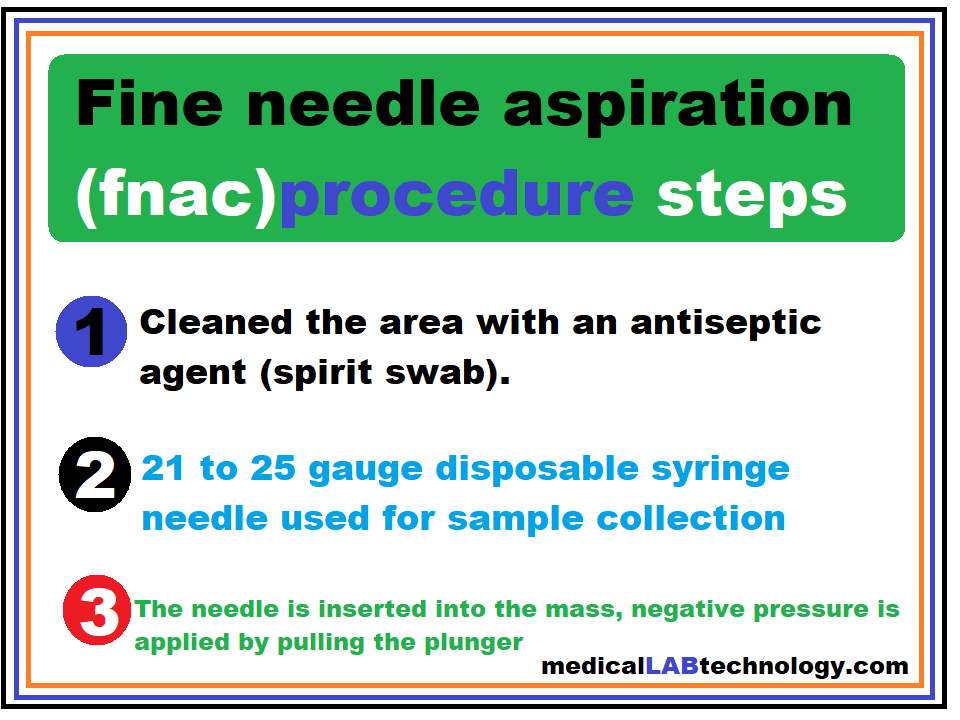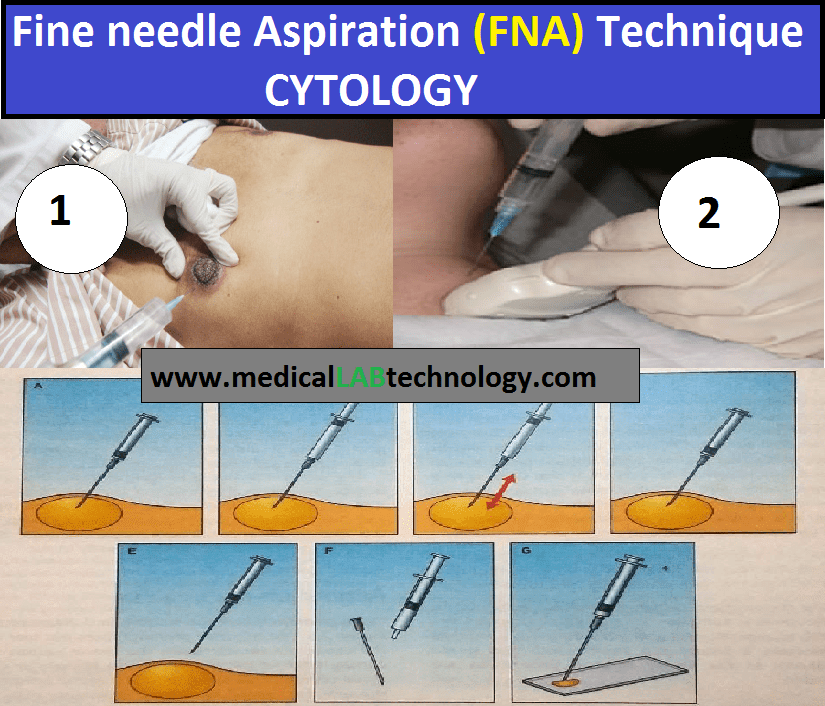Fine needle aspiration cytology procedure or FNAc. It is an inexpensive but important technique in the cytology laboratory. It is a rapid method of assessing the lesions and masses in the body.
Fine needle aspiration is a type of aspiration by which a fine needle is inserted and used to collect the sample from superficial and subcutaneous lesions in the breast. thyroid, lymph node, salivary gland, soft tissue, and abdominal masses.
Fine needle aspiration procedure steps
A proper clinical history is helpful in establishing the proper diagnosis.
Note: Before starting, the patient should be explained about the procedure and assured about it.
Following are the steps in the FNA (fine needle aspiration) procedure.
- Cleaned the area with an antiseptic agent (spirit swab).
- 21 to 25 gauge disposable syringe needle used for sample collection.
- The needle is inserted into the mass, negative pressure is applied by pulling the plunger. The mass is probed in many directions.
NOTE: Prior to the withdrawal of the needle, the plunger is released. It will cause the equalization of pressure.
4. Finally, a cotton swab is applied to stop the bleeding.
Slide preparation after fine-needle aspiration
Following are the slide preparation steps after sample aspiration.
- Detach the syringe from the needle after aspiration, and fill it with air.
- Reattach the syringe with the same needle, and push the plunger gently to express the material onto the glass slide. This step is repeated two to three times.
- Now spread the material on the slide by using a spreader.
- Smear is allowed to air dry or it can be wet fixed in ethyl alcohol.
- The slide can be stained by Papanicolaou (PAP stain), hematoxylin and eosin, modified Giemsa stain, and Leishman stain can be used.
- Sometimes cell blocks are prepared from FNA specimens.
Pitfalls of Fine needle aspiration during slide preparation
Followings are the pitfalls in fna procedure,
- If the specimen is too bloody, the cells from the actual lesion will be diluted in a smear.
- If the aspiration time is too long, the sample will clot in the syringe and in the needle. It will result in improper slide preparation.
- If slides are incorrectly made, the nuclear detail will be poor and artifacts will be created.
Fine needle aspiration disadvantage
FNA procedure has some disadvantages. Here is the list of all
- There is more chance of bleeding and infection of superficial FNA procedures.
- In case of deep-seated lesions embolism, neurovascular injury, or major internal bleeding.
- There is a chance of an intraperitoneal leak of a hollow viscus.
- Vasovagal syncope may also occur.
What is the Fine-needle aspiration advantage?
FNA has some disadvantages but it also has many advantages. Following are
- It is an inexpensive and rapid method of early diagnosis.
- It is a reliable method.
- It is a time-saving method in cytology.
- Painless as compared to other testing methods.


It is very essential and important page I’ve everseen. Continue and update us with our progressional.